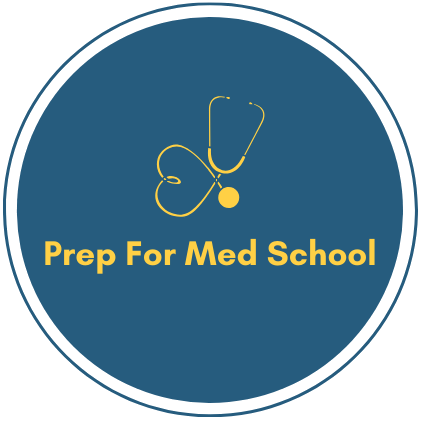Applying to medical school is extremely competitive. Out of all professional degree programs, it is the most selective. So you maybe wondering what your chances are of getting into medical school with a 3.2 undergraduate GPA.
In short, getting into a top ranked (US News & World Report/USNWR) medical school with a 3.2 undergraduate GPA is hard. However, it is not impossible. On the other hand, getting into an unranked medical school is not uncommon with a 3.2 GPA, especially when paired with good MCAT scores.
In the article below, we will discuss your exact chances of getting into medical school with said GPA, and what you can do to increase your odds.
Ranked and Unranked Medical Schools
The US News & World Report rankings have been the gold standard for comparing allopathic (MD) and osteopathic (DO) medical schools for the last several decades. When someone is referring to a ranked medical school, they are most often referring to this ranking. While many pre-med students put a lot of emphasis on this ranking, your job prospects are pretty bright either way because of the huge demand for doctors. Association of American Medical Colleges (AAMC) data suggests a huge shortcoming of physicians and estimate that the United States will see a shortage of nearly 122,000 physicians by 2032 due to a growing population that is living longer than ever.
Even though going to a top-ranked school can denote some prestige and bragging rights, it does not make or break your career prospects after graduation. Having an MD/DO degree from a US-based accredited institution and passing your COMLEX/USMLE will almost certainly guarantee you a job.
Should Caribbean Medical Schools Be An Option?
Caribbean schools are often on the minds of people who are unable to get into a ranked school. But before applying, you should know that graduates of Caribbean medical schools have a significantly lower residency match rate than DO/MD programs based in the United States. According to the 2020 NRMP Match Results and Data, residency match rates were roughly 30% lower for international medical graduates (IMGs).
We wrote a whole article about Caribbean medical schools. So check it out before deciding to go down that road.
Medical School Is Extremely Competitive
No matter how you look at it, medical school is extremely competitive. All USNWR-ranked medical schools reported an average median GPA of 3.72 (and mean GPA of 3.71) for students who entered medical school in fall of 2017. To break it down further, the average median GPA for the top 10 primary care programs was 3.78 and average median for top 10 research programs was 3.87.
Not only is this a high median GPA, the coursework is also rigorous because of the heavy emphasis on science classes. According to the AAMC, the acceptance rate for allopathic (MD) medical schools is 41.9% for the 2018-2019 school year. The American Association of Colleges of Osteopathic Medicine (AACOM) showed 20,981 applicants for 7,467 seats for the 2018 application cycle, a 35% acceptance rate.
To give you a comparison to how competitive medical school is GPA-wise, here are the admission rates and average undergraduate GPAs for pharmacy and dental school:
According to PharmCAS, the average GPA of accepted pharmacy students is 3.30 for the 2017-2018 school year. The acceptance rate for pharmacy school is 82.7%, twice that of medical school.
According to the American Dental Education Association, 54% of dental school applicants ended up enrolling in 2018, with a mean GPA of 3.55.
Getting Into Medical School With a Low GPA
Keith Baker, an assistant dean for admissions at Virginia Commonwealth University School of Medicine says that while your overall undergraduate GPA is important, medical schools analyze undergraduate science courses very carefully. Thus, having an extremely high science GPA will give you a boost. In addition, Baker says “medical school hopefuls with low college grades in premed science classes may be able to mitigate that flaw in their application package if they take graduate-level science courses and earn high grades.”
So if you have your future set on medical school with a low GPA but can somehow squeeze in a couple of graduate-level science courses before graduation, it would help your chance.
You can also take graduate-level science courses through a post-baccalaureate program. According to the AAMC, doing well in your post-baccalaureate medical program can increase your chances of admission. AAMC also has a page that shows you over 260 post-baccalaureate medical programs designed specifically for academic record enhancement.
Of course, having a very high MCAT score will also help. The median MCAT score for all 2019 freshmen at USNWR-ranked medical schools was 512. That scores sits in the 85th percentile of all MCAT test-takers. However, if you to score in the 95th to 99th percentile, an MCAT score from 517 to 522, you will greatly increase your chances of getting into some medical ranked schools.
With a 3.2 GPA and a 512 MCAT score, your LizzyM score is 64. That score will put you on the outskirts of ranked medical schools but still give you a good chance at many unranked medical schools. However, with a GPA of 3.2 and an MCAT of 519, your LizzyM score goes up to 69, which is the average of many mid-tier medical schools. University of California Davis School of Medicine entrants have an average LizzyM score of 69.1.
To play around with your LizzyM score, go here.
Acceptance Rate For Applicants With GPA from 3.0 to 3.39
AAMC recently released admission data from 2017-2018, 2018-2019, and 2019-2020 application cycles. The following provides a glimpse into your chance of getting into med school with 1) a 3.0 to 3.19 GPA and 2) a 3.2 to 3.39 GPA.
| GPA from 3.0 to 3.19 | MCAT Score | 502-505 | 506-509 | 510-513 | 514-517 | Greater than 517 |
| Acceptance Rate | 20.6% | 25.4% | 33.8% | 41.2% | 49.8% |
| GPA from 3.2 to 3.39 | MCAT Score | 502-505 | 506-509 | 510-513 | 514-517 | Greater than 517 |
| Acceptance Rate | 21.5 | 29.6% | 39.9% | 50.8% | 56.9% |
As you can see, you still have a pretty good chance at getting into medical school with a GPA between 3.0 and 3.39 and MCATs from 506 to 517. Once you get above 517, your chance at getting into medical school is at about 50 percent or better, with your odds increasing with your GPA.
According to the same AAMC data, your chance of getting into medical school with a 3.2 GPA and an MCAT score of 510 is better than someone with a GPA greater than 3.79 but with an MCAT between 498 to 501. The acceptance rate of the latter group is 30.8%.
Keep in mind that the above data is from AAMC, so it only applies for allopathic (MD) medical schools. So if you also want to include osteopathic (DO) medical schools, your overall acceptance % will be higher, as 45.3% of DO matriculants in the 2018 application cycle had MCATs of 501-506.
Will Extracurricular Activities Help?
While all medical school applicants are expected to have some form of work, research, or volunteer experience that is linked to medicine, padding up your resume with more extracurricular activities won’t help all that much if you have a low GPA and MCAT score. Dr. Dorenkamp, clinical faculty at Michigan State University College of Osteopathic Medicine says having more extracurricular or research won’t help you much “if you have a super-low GPA or perform poorly on the MCAT.”
However, if you find that you have a 3.2 GPA but have an MCAT score that is well above the median for the school you want to apply to, doing more extracurriculars may help.
The Bottom Line
Although an undergraduate GPA of 3.2 is low for many medical schools, having a great MCAT should still keep you in the running for many medical schools. A high science GPA or doing well with post-baccalaureate classes will certainly help.
And even if you have an average MCAT score with a 3.2 GPA, you should still be able to get into some medical schools. The most important first step to a career as a physician is to get into a medical school—ranked or unranked. After graduating and passing your COMLEX/USMLE, getting a job as a physician is almost certain.







